Beyond Vanity Metrics: Share of Influence Vs. Share of Voice
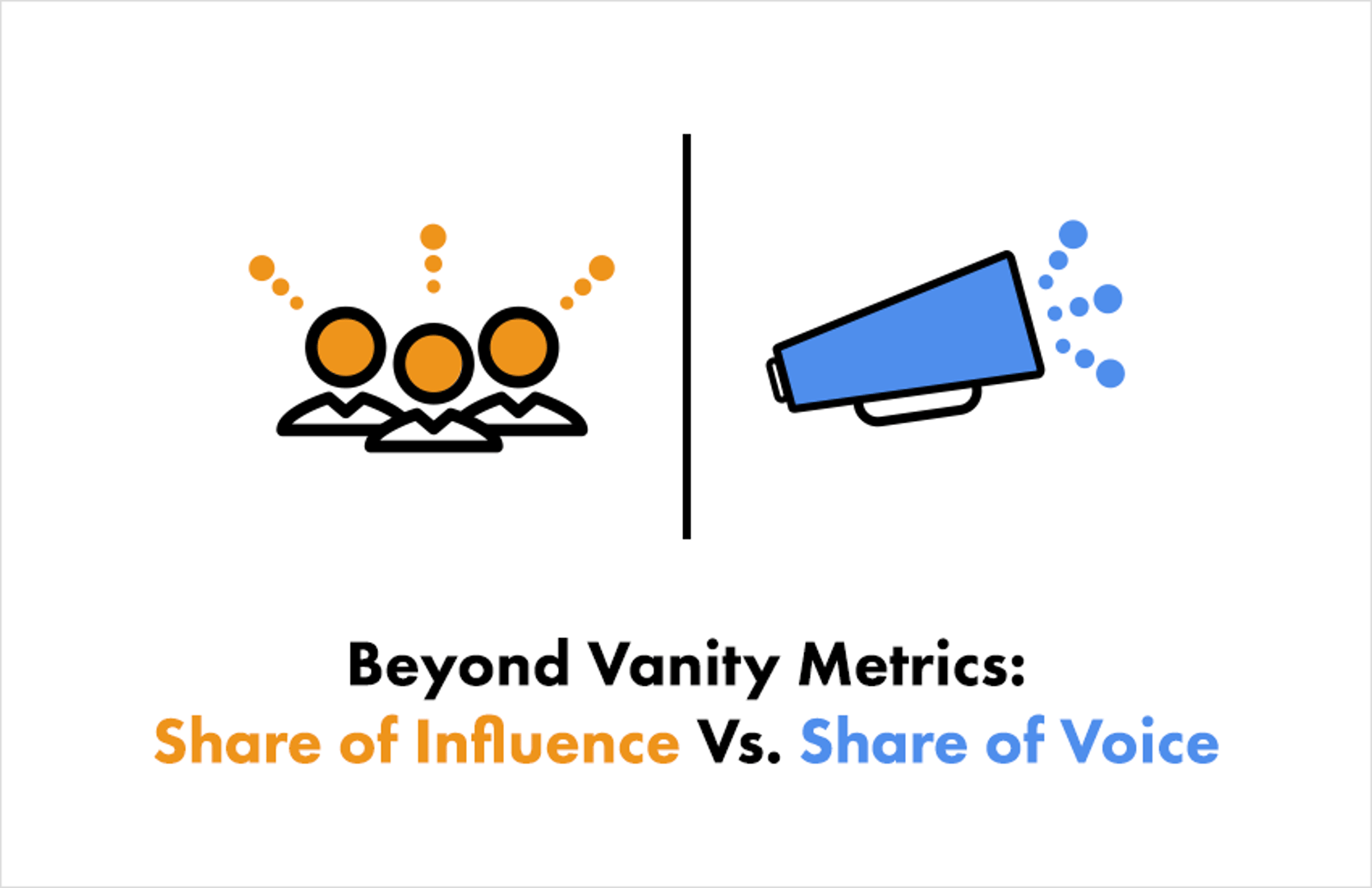
Published 2023-03-21
Summary - If marketing buzz is any indication of current marketing trends and tactics, Share of Influence is a drastically under utilized marketing metric.
If marketing buzz is any indication of current marketing trends and tactics, Share of Influence is a drastically underutilized marketing metric. Instead, vanity metrics like “Share of Voice” are what buzz. Google both terms and you’ll see what I mean. This is especially troubling considering the growing prevalence of online marketplaces, product review sites, consumer forums, professional networks and industry/sector specific blogs - channels through which key influencers are shaping vendor conversations and impacting buying decisions. The underuse of Share of Influence may be partly explained by the fact that it is not as straightforward or as easy to measure as Share of Voice. But Share of Influence is a more useful metric, because it is more specific, and it is more actionable. That’s why it’s the subject of this post.

“Share of Influence” defined
Share of Influence measures how much a brand or product is talked about by key influencers within an industry, sector or product category, relative to competing brands. It differs from Share of Voice in its focus on what influencers are saying, rather than on what anyone and everyone are saying. To measure Share of Influence quantitatively, measurement is usually confined to online brand mentions.
“Influencers” in this metric is subjective; it should be defined in relation to a specific industry, sector or product category. For many companies, influencers might be identified as people frequently talking about issues relevant to their business, with a strong and active social media following.

How do you measure Share of Influence?
Measuring Share of Influence can be broken down into three steps:
- Identify influencers;
- Initiate and automate social listening programs targeting the influencers identified;
- Aggregate data obtained through social listening to determine total brand mentions relative to competitors.
1- Identify influencers
On one level, this is much easier said than done. Enterprises like HP spend a lot of time and money quantifying social influence via Big Data. I recently read a business case on HP’s effort to measure its “Share of Influence” using an internally developed Brand Clout tool. This project utilized Hadoop and internally developed data management technologies to structure and analyze big data across 21 metrics of social influence. This was a big project for a large enterprise that was using advanced statistics and proprietary technologies. What hope does an SMB have of replicating such an effort?
Happily, identifying influencers doesn’t need to be an overly expensive project for SMBs, but it will take time to do it effectively. Most of the key influencers talking about SMB products and services can be identified manually, and there are diminishing returns in finding and engaging larger numbers of influencers. So how can an SMB find that core group?
Start by looking into who’s already talking about your business. Go through your Twitter feed and identify frequent referrers of your Twitter handle. Look through the list of referral domains to your website in Google Analytics to identify blogs and review sites that are high sources of web traffic. See who has been actively engaging the content you’ve been sharing through social media. There are a lot of inexpensive tools out there that can help you automate this process, including Moz’s Follower Wonk. Keep a running list of potential influencers in a spreadsheet, with relevant social influence stats like Twitter followers and social engagement.

Next I like to run a search for people frequently using hashtags that are relevant to our business like #businessdashboard and #datavisualization. Pick the hashtags most relevant to your business, scan a week of tweets and add high frequency users of relevent hashtags to your spreadsheet. Parts of this process can also be automated with tools like Hashtagify.
Lastly web search the same terms, adding any relevant bloggers and third party review sites to your list. On the subject of web search, there are a lot of great tools out there to that can help you identify top blogs and bloggers in your space like Grouphigh, Buzzsumo and Twtrland.
These three steps should give you a robust database of potential influencers to track. Your next task is to reduce your list to a core group of influencers that you can monitor and actively engage. You want the list to be small enough to be manageable from an engagement standpoint, but not so small that you’ll risk days or weeks of listening for brand mentions in silence (you can’t expect your brand to be on the tip of your influencer’s tongues all the time). Refine your influencer list in consideration of their relevance to your business, their social media following and their activity level.
2- Initiate and automate social listening programs targeting your chosen influencer group.
Once you have your list of key influencers, you’ll want to set up an automated process to listen to what they’re saying online, and to alert you when your brand’s mentioned. There are a wide variety of social media listening tools out there including Hootsuite, TweetReach, Social Mention, Twazzup , and How Sociable. However, many of these tools will only tell you what’s being said about your brand by anyone and everyone, which can lead you to less actionable metrics like Social Sentiment and Share of Voice. What we’re looking for is a tool to monitor what our select group of influencers are saying. If you just want to monitor what your influencers are saying on Twitter, Tweetdeck is a great, free option; it allows you to monitor the Twitter feeds of multiple handles on a dashboard. To listen to what your influencers are saying across a variety of channels, check out Talkwalker or Mention.
3- Aggregate social listening stats to determine total brand mentions relative to competitors.
Bringing the process of measuring Share of Influence full circle is the tricky part, and you’ll need a tool to help you do it. Talkwalker is the only tool I’ve come across that will listen for mentions of a brand and a brand’s competitors among a select group of influencers, aggregate that data, and deliver a Share of Influence metric and related data visualizations. Here’s how it’s done with Talkwalker:
- On your account homepage, go to ‘Topic set up’
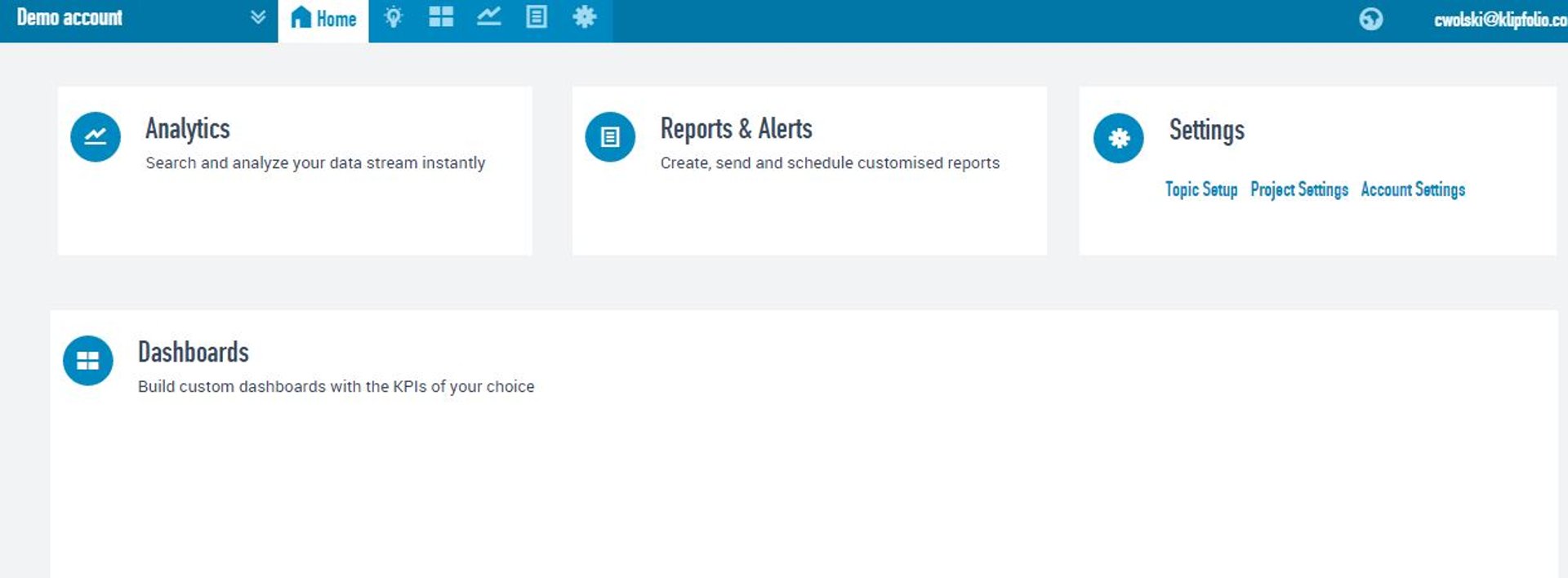
- Add your influencer’s media channels. Under “CHANNELS’’ press “ADD CHANNEL’’. Click the channels that your influencers use, then add the relevant URLsurl’s (social media pages, blog pages, etc.). For example, if you want to add influencer Twitter feeds as a channel, click the Twitter button, then enter each of your influencer’s Twitter handles into the field provided, one at a time.
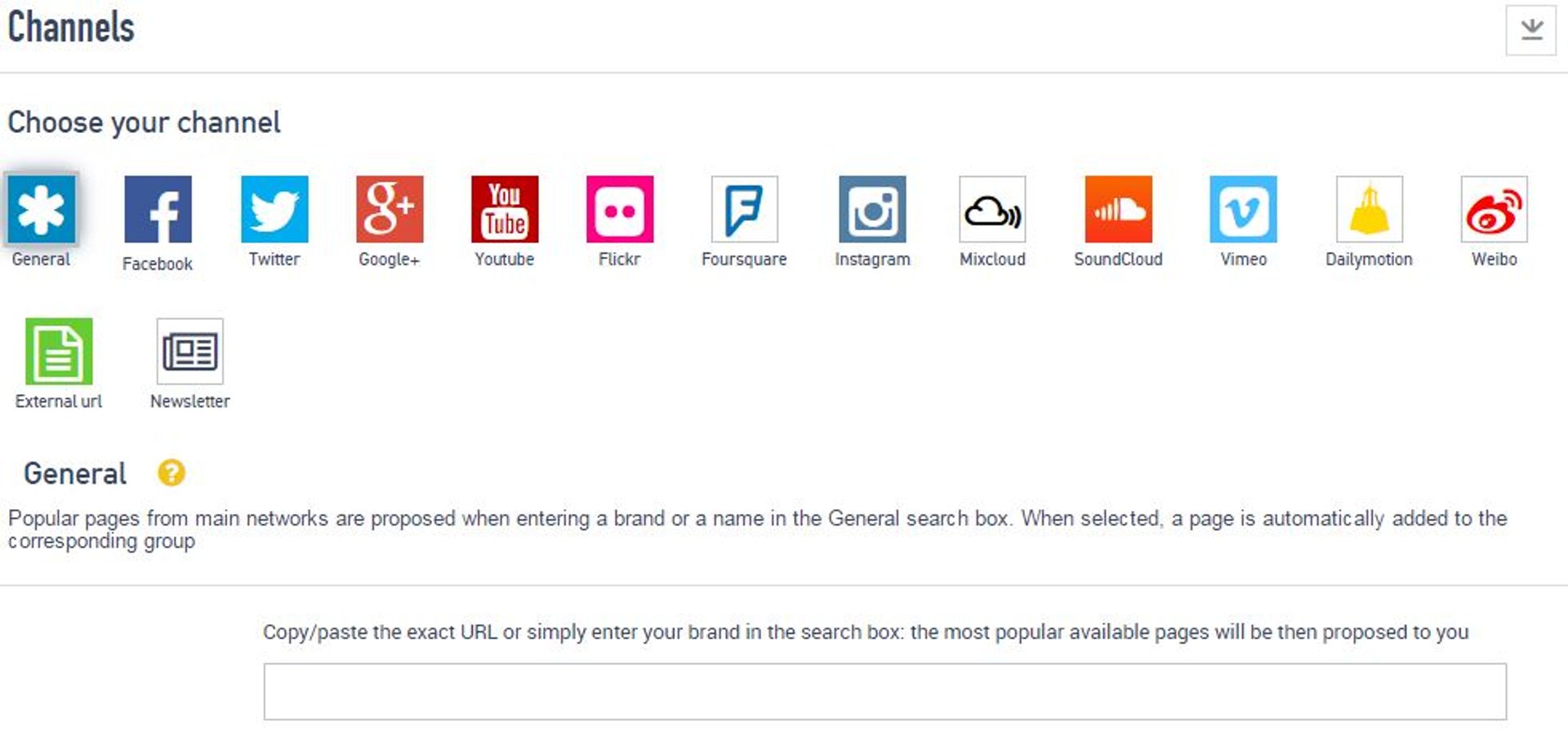
- Next add your competitors to get relative mentions. Under ‘FILTERS’, click ‘ADD FILTER’, then input the name of one of your competitors in the search query field. Press “save”, then enter a second competitor, repeat process, etc. Creating a group name for your filters will make them easier to find later.
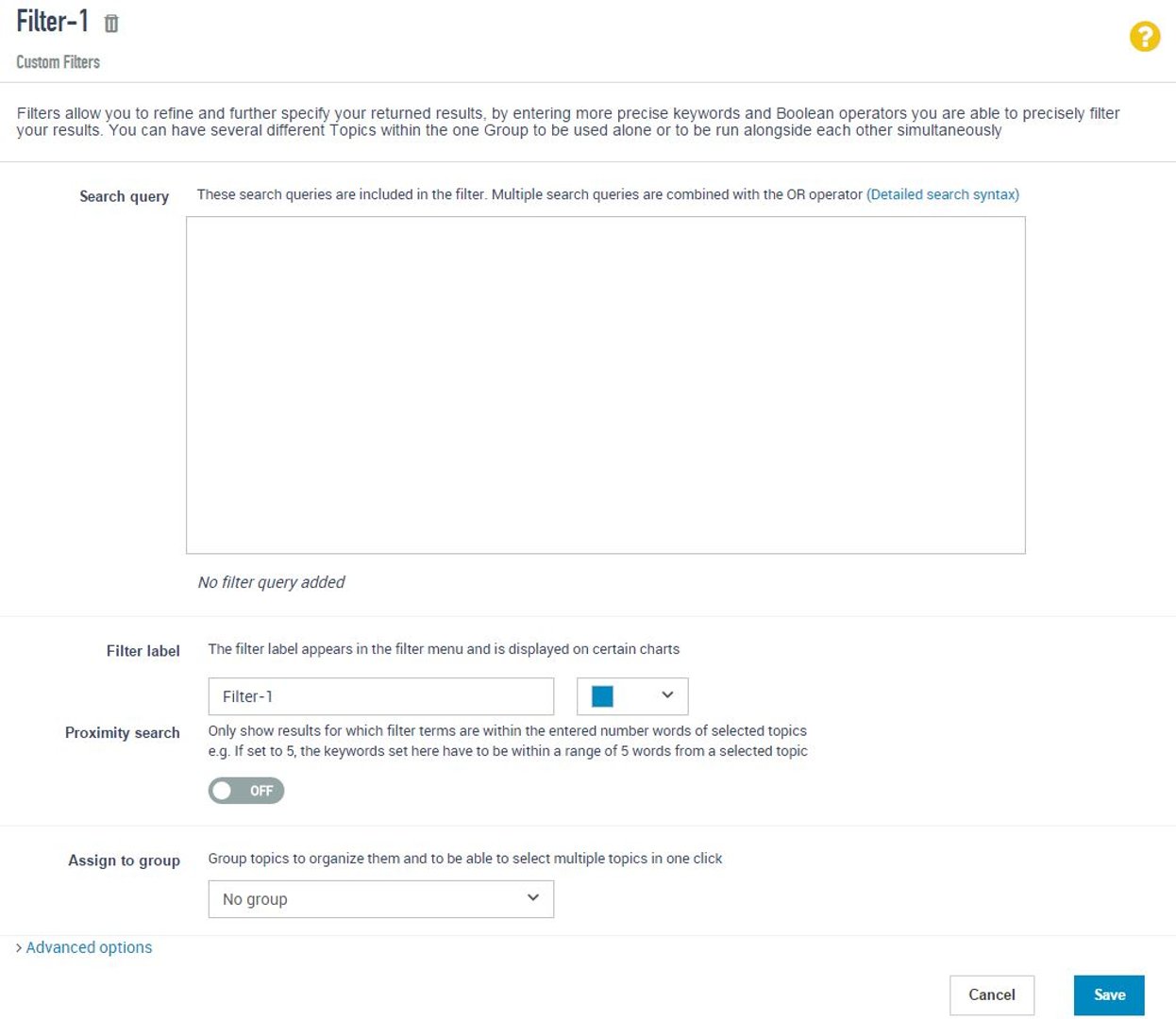
- Now go back to your account homepage and press ‘Analytics’. This will take you to the results tab of your Analytics.
- On the analytics page you’ll now see the influencer channels you’ve selected to monitor on the left side of your screen under the heading "Channel". Click on each influencer you would like to monitor.
- Once the influencers have been selected, go to the top of the page and click "open filters". In the “Custom Filters” section, select the filters of your choice, then click back to the results page. You’ll see that "Filter" has now been added to the light blue navigation menu above the main results chart. Clicking this button will produce Share of Influence metrics and data visualizations that look like this:
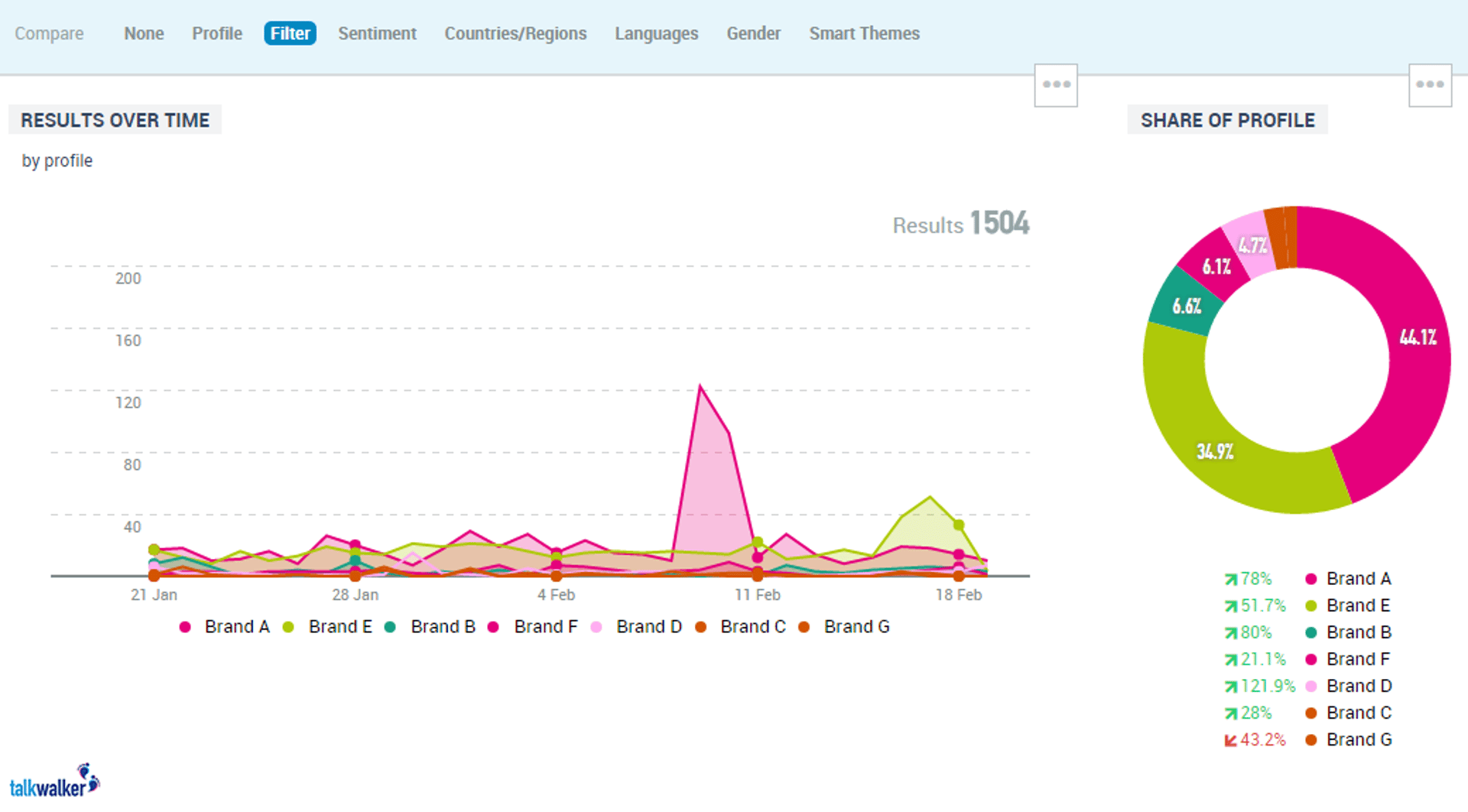
What do you do with Share of Influence?
As mentioned at the outset, Share of Influence is a more valuable metric than Share of Voice because it is more actionable. In measuring, monitoring and working to optimize Share of Influence, your overarching task is clear: monitor and engage influencers in a positive and impactful way, to influence what, when and how often they talk about your brand. Share of influence is a barometer on how well you’re doing.
In both B2B and B2C contexts, buyers are increasingly making purchase decisions before interacting with vendors directly, having been influenced by a small group of commentators via social media, product marketplaces, community forums and the like. These key influencers are shaping the conversation; helping customers articulate needs, wants and required product specifications, surveying the competitive landscape and defining competitive advantages. And their commentary is driving purchases. This is why Share of Influence is an increasingly valuable metric, and one that should be getting more attention by performance oriented marketers.
Also see:
Beyond Vanity Metrics: Mentions and Social Sentiment
Beyond Vanity Metrics: Net Promoter Score (NPS) & Customer Referral Rate (CRR)
Related Articles

Klipfolio Partner How-To #1: Duplicating dashboards across client accounts
By Stef Reid — November 27th, 2025
Klipfolio Partner How-To #2: Company Properties can simplify client set-up
By Stef Reid — November 26th, 2025
17 KPIs Every Data-Driven Manager Needs to Lead Their Team
By Danielle Poleski — October 14th, 2025

